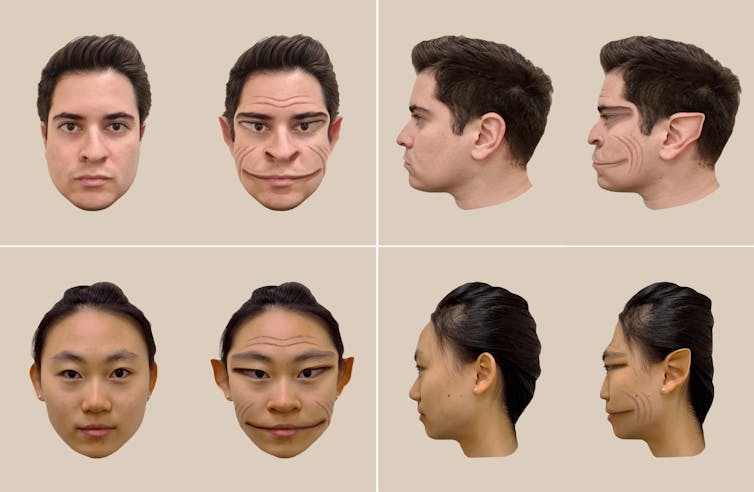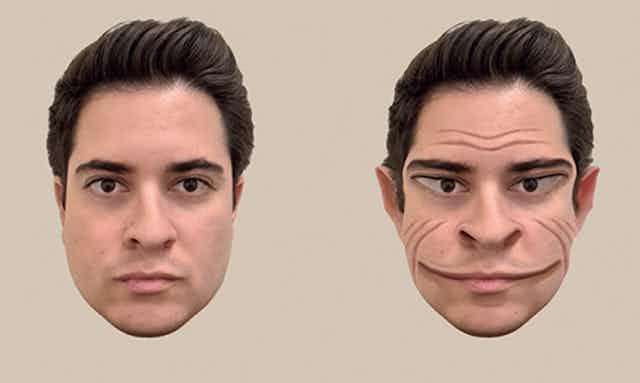If you’ve seen portraits painted by Pablo Picasso or Francis Bacon, you might not be surprised to hear that both men may have suffered from a disorder that affects how faces are perceived.
Prosopometamorphopsia (PMO) is a condition where faces appear distorted, and sometimes even demonic. In most cases, these distortions alter how images of faces look, as well as those seen in person. This makes it difficult for sufferers to assess the accuracy of illustrations depicting what they see because the illustration itself will appear distorted.
However, a case described in a recent study gave researchers new insight into PMO. Unlike most other cases, the 58-year-old man (referred to as VS) perceived images of faces without distortion. Unfortunately, when he saw people in person over the last 31 months, every face appeared stretched and “demonic” to him.
Not to be confused with prosopagnosia (poor face recognition but without visual distortions), PMO is thought to be extremely rare and people who have it perceive faces as drooping, stretched, out of position, or either smaller or larger than normal. These distortions might apply to the whole face, only one side, or even be restricted to particular features like the nose and mouth.
What causes prosopometamorphopsia?
In contrast with prosopagnosia, which can either be acquired (through injury, for example) or developmental (present from birth), PMO seems only to be the result of the former. A 2021 study by researchers in the Netherlands reviewed 81 cases of PMO. The causes included brain infarction (disrupted blood flow to part of the brain), haemorrhagic stroke (bleeding into the brain), surgery complications, head injury, and brain tumour. However, in 24% of cases, there appeared to be no structural abnormalities to the brain. Instead, PMO was associated with other diagnoses like epilepsy, migraine and schizophrenia.
Reassuringly, in the majority of cases, people with PMO appear to recover from their condition. This might be either a full or partial recovery, sometimes resulting from treatments that address the underlying cause (such as anti-epileptic drugs for epilepsy, or surgery to remove a brain tumour). However, some people seem to recover without any intervention. The time for recovery ranges from hours to years, but the typical recovery period is often days to weeks.
Is face recognition affected?
Despite the fact that people with PMO sometimes experience seeing profound facial distortions, their ability to recognise faces rarely seems to be affected. However, sufferers may simply be relying on other cues to help with recognition, like the person’s voice or clothes. For some people, distortions only appear after seconds or minutes of seeing someone’s face, allowing them time to identify the person first. Researchers have also tried to model how PMO-like distortions could affect face recognition. They found that the distance between the viewer and face played a significant role in how accurately faces were recognised by participants.
A recent study by researchers in New Hampshire, US, focused on the case of a man known as VS. He had a lesion in his hippocampus (a region of the brain mainly associated with memory) but no other medical issues of note.
Although VS saw people’s faces as stretched and with deep grooves (in his words, appearing “demonic”), facial images were unaffected for him. The researchers presented VS with in-person faces and the same faces on a computer screen. Next, the researchers used image-editing software to modify each photo so that it matched VS’s descriptions, listening to his real-time feedback.

It was the first time researchers could create photorealistic visualisations of these kinds of distortions, providing a depiction of how people with PMO can see those around them.
VS’s distortions also appeared to be affected by colour, so researchers investigated what happened when VS viewed faces through coloured plastic filters. They found that green filters decreased, and red filters intensified, the distortions compared with the no-filter baseline. These results showed that colour filters worn in glasses could reduce face distortions in PMO, and that colour might affect how we perceive face shape in general.
What can we learn?
As researchers continue to build on our knowledge of PMO, it is likely that more insights will be revealed about how the general population processes faces. Among the many questions yet to be answered, some involve how and where faces are represented in the human brain. We also still have a lot to learn about the specific nature of PMO’s distortions, what they can tell us, and why they seem to resolve themselves in some cases but not others. For now, PMO is both a fascinating and disturbing condition, and one that could potentially teach us a great deal about human face perception.
Given that PMO is so rare and we still have so much to learn about it, please consider getting in touch with me (the author of this article) if you think you may be suffering from it. Remember that those with PMO don’t really think that the world is distorted, and instead realise that their vision is different in some way.


